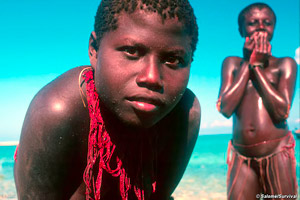![]()
 The Andaman Islands are our newest sailing cruises’ destination from November to March. This is the best season to explore this outstanding pristine archipelago. Natural border between the Bay of Bengal and the Andaman Sea, the Andaman and Nicobar groups include no less than 570 islands, of which only 38 are permanently inhabited. Most of the islands are covered with a dense primary forest, giving shelter to an impressing variety of fauna and flora.
The Andaman Islands are our newest sailing cruises’ destination from November to March. This is the best season to explore this outstanding pristine archipelago. Natural border between the Bay of Bengal and the Andaman Sea, the Andaman and Nicobar groups include no less than 570 islands, of which only 38 are permanently inhabited. Most of the islands are covered with a dense primary forest, giving shelter to an impressing variety of fauna and flora.
The archipelago also hosts one of the largest areas of mangrove forest in the world. The coral reefs lying beneath crystal-clear waters are reputed to be as healthy as they used to be in the nineties, when Commandant Cousteau made this place his underwater playground.
The Andamans and Nicobars were brought to the jurisdiction of India after the end of the British colonisation. The islands are mostly inhabited by Hindus who came from Bangladesh during the partition of India in 1947 yet; they were not the first people to live in this remote region. Five ethnicities of hunter gatherer called ‘Negritos’ have been living in these islands for millenniums. The term ‘Negritos’ comes from their physical appearance which is totally different from other Asian people found in the region: most of these autochthons are short, very dark-skinned, and some of them are frizzy-haired.
Great Andamanese
The Great Andamanese people were about 5,000 in the middle of the nineteenth century; today, they are only 52. Most of the tribes have disappeared in about 150 years; the Bo tribe’s last member died in 2010.
Jangil
The Jangil tribes have almost disappeared; only a few of them remain.
Sentinelese
The Sentinelese tribe is considered the most isolated group of people in the world. They count only between 50 and 200 individuals. Little is known about them, due to their hostility towards anyone who tries to approach them. They live on the 47sqm North Sentinel Island, and vigorously defend their territory.
Jarawa
In a similar way as the Sentinelese, the Jarawa always had a hostile comportment towards the colonizers who invaded their territory and hunted their game during the last 150 years. Before the British invasion, they were about 8,000; today, only 300 of them remain. These survivors just escaped a forced relocation ordered by the Indian government, thanks to the Survival NGO. The government projects to build a road on the Jarawa territory, in a way to develop tourism in the region.
Onge
The Onge people also suffered a lot in the past 150 years: their population has declined of 85%, leaving only 89 people still alive, and tamed.
Summary
Even though a few NGOs do their best to preserve these people and their ancestral culture, the battle for their survival is going to be tough. The access to most of the islands where they live has fortunately been forbidden to visits, in a way to protect these aborigines’ customs and traditions.
![]()
![]()
| Tweet | S/Y Aventure |  |
 |
![]()


